

Research methods pedagogy: Engaging psychology students in research methods and statistics. Research methods and statistics are central to the development of professional competence and evidence based psychological practice.
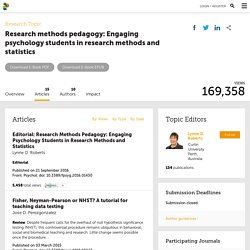
Furthermore, the ability to interpret and apply research findings contributes to the development of psychological literacy, the primary outcome of an undergraduate education in ... Research methods and statistics are central to the development of professional competence and evidence based psychological practice. Furthermore, the ability to interpret and apply research findings contributes to the development of psychological literacy, the primary outcome of an undergraduate education in psychology.
Despite this, many psychology students express little interest in, and in some cases an active dislike of, learning research methods and statistics. Important Note: All contributions to this Research Topic must be within the scope of the section and journal to which they are submitted, as defined in their mission statements.
Coursera Data Science Specialization. Regression. Bayesian Statistics. Probability. Data Science. Data Resources. Stat Resources. Teaching Intro Stats Students to Think with Data. The ASA Curriculum Guidelines for Undergraduate Programs in Statistical Science (PDF) states, “Institutions need to ensure students entering the work force or heading to graduate school have the appropriate capacity to ‘think with data’ and to pose and answer statistical questions.”
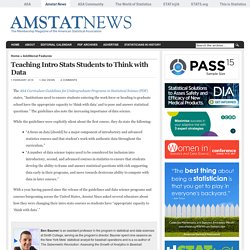
The guidelines also note the increasing importance of data science. While the guidelines were explicitly silent about the first course, they do state the following: “A focus on data [should] be a major component of introductory and advanced statistics courses and that student’s work with authentic data throughout the curriculum.” “A number of data science topics need to be considered for inclusion into introductory, second, and advanced courses in statistics to ensure that students develop the ability to frame and answer statistical questions with rich supporting data early in their programs, and move towards dexterous ability to compute with data in later courses.”
What technology do you use in the classroom? Undergraduate Educators. The Food Lab: 15-Minute Ultra-Gooey Stovetop Mac and Cheese. Just as fast as the blue box, but way, way better.

[Photographs: J. Kenji Lopez-Alt] More Cheese Week. M.dailykos. Education-learn to use public opinion data with confidence.
Data Sets. Assessment of Statistics Education. Stat/Data Science Text. Online Statistics: An Interactive Multimedia Course of Study. Danny Dorling. These are more websites that are related to Danny’s work: Map of worldwide Internet users in 2002 Comments are closed.
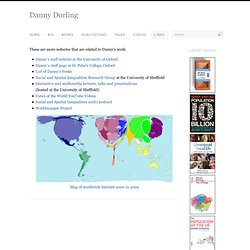
Latest Books. Cartogram Types. What is a Cartogram?
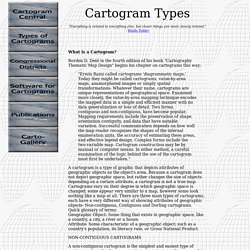
Borden D. Dent in the fourth edition of his book "Cartography Thematic Map Design" begins his chapter on cartograms this way: "Erwin Raisz called cartograms 'diagrammatic maps.' Today they might be called cartograms, value-by-area maps, anamorphated images or simply spatial transformations. Whatever their name, cartograms are unique representations of geographical space. A cartogram is a type of graphic that depicts attributes of geographic objects as the object's area. The difference between these two types of non-contiguous cartograms is a significant one. PSEUDO-CARTOGRAMS Pseudo-cartograms (or false cartograms) are representations that may look like cartograms but do not follow certain cartogram rules.
Spae.pdf (application/pdf Object) Introductory Statistics: Concepts, Models, and Applications by David Stockburger. Www.math.umass.edu/~lavine/Book/book.html. Introduction to Statistical Thought grew out of my teaching graduate and undergraduate statistics courses for many years, and from my experience as a statistical consultant and collaborator.
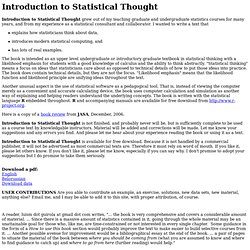
I wanted to write a text that explains how statisticians think about data, introduces modern statistical computing, and has lots of real examples. The book is intended as an upper level undergraduate or introductory graduate textbook in statistical thinking with a likelihood emphasis for students with a good knowledge of calculus and the ability to think abstractly. "Statistical thinking" means a focus on ideas that statisticians care about as opposed to technical details of how to put those ideas into practice. The book does contain technical details, but they are not the focus. Another unusual aspect is the use of statistical software as a pedagogical tool. Here is a copy of a book review from JASA, December, 2006. Introduction to Statistical Thought is available for free download.
Chance Welcome Page. Welcome to WISE (Web Interface for Statistics Education)